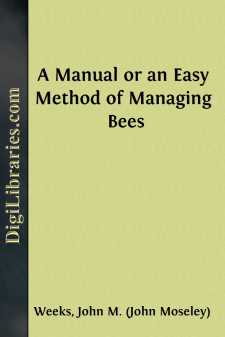Categories
- Antiques & Collectibles 13
- Architecture 36
- Art 48
- Bibles 22
- Biography & Autobiography 813
- Body, Mind & Spirit 142
- Business & Economics 28
- Children's Books 14
- Children's Fiction 11
- Computers 4
- Cooking 94
- Crafts & Hobbies 4
- Drama 346
- Education 46
- Family & Relationships 57
- Fiction 11828
- Games 19
- Gardening 17
- Health & Fitness 34
- History 1377
- House & Home 1
- Humor 147
- Juvenile Fiction 1873
- Juvenile Nonfiction 202
- Language Arts & Disciplines 88
- Law 16
- Literary Collections 686
- Literary Criticism 179
- Mathematics 13
- Medical 41
- Music 40
- Nature 179
- Non-Classifiable 1768
- Performing Arts 7
- Periodicals 1453
- Philosophy 64
- Photography 2
- Poetry 896
- Political Science 203
- Psychology 42
- Reference 154
- Religion 513
- Science 126
- Self-Help 84
- Social Science 81
- Sports & Recreation 34
- Study Aids 3
- Technology & Engineering 59
- Transportation 23
- Travel 463
- True Crime 29
Mushrooms: how to grow them a practical treatise on mushroom culture for profit and pleasure
by: William Falconer
Description:
Excerpt
PREFACE
Mushrooms and their extensive and profitable culture should concern every one. For home consumption they are a healthful and grateful food, and for market, when successfully grown, they become a most profitable crop. We can have in America the best market in the world for fresh mushrooms; the demand for them is increasing, and the supply has always been inadequate. The price for them here is more than double that paid in any other country, and we have no fear of foreign competition, for all attempts, so far, to import fresh mushrooms from Europe have been unsuccessful.
In the most prosperous and progressive of all countries, with a population of nearly seventy millions of people alert to every profitable, legitimate business, mushroom-growing, one of the simplest and most remunerative of industries, is almost unknown. The market grower already engaged in growing mushrooms appreciates his situation and zealously guards his methods of cultivation from the public. This only incites interest and inquisitiveness, and the people are becoming alive to the fact that there is money in mushrooms and an earnest demand has been created for information about growing them.
The raising of mushrooms is within the reach of nearly every one. Good materials to work with and careful attention to all practical details should give good returns. The industry is one in which women and children can take part as well as men. It furnishes indoor employment in winter, and there is very little hard labor attached to it, while it can be made subsidiary to almost any other business, and even a recreation as well as a source of profit.
In this book the endeavor has been, even at the risk of repetition, to make the best methods as plain as possible. The facts herein presented are the results of my own practical experience and observation, together with those obtained by extensive reading, travel and correspondence.
To Mr. Charles A. Dana, the proprietor of the Dosoris mushroom cellars and estate, I am greatly indebted for opportunities to prepare this book. For the past eight years everything has been unstintedly placed at my disposal by him to grow mushrooms in every way I wished, and to experiment to my heart's content.
To Mr. William Robinson, editor of The Garden, London, I am especially indebted for many courtesies—permission to quote from The Garden, "Parks and Gardens of Paris," and his other works, and to illustrate the chapters in this book on Mushroom-growing in the London market gardens and the Paris caves, with the original beautiful plates from his own books.
The recipes given in the chapter on Cooking Mushrooms, except those prepared for this work by Mrs. Ammersley, although based on the ones given by Mr. Robinson, have been considerably modified by me and repeatedly used in my own family.
My thanks are also due to Mr. John F. Barter, of London, the largest grower of mushrooms in England, for information given me regarding his system of cultivation; to Mr. John G....












